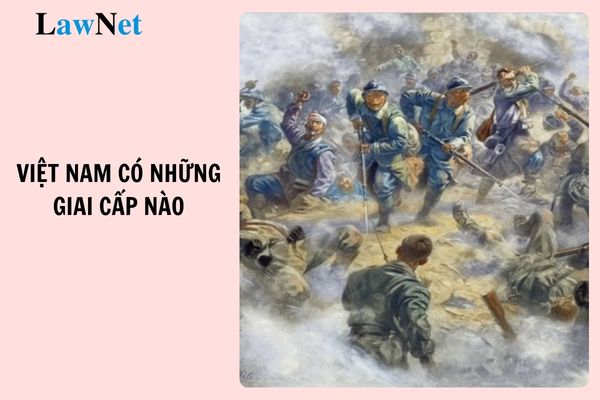What are the social classes existing in Vietnam before the First World War? What are the periodic assessment forms for 12th-grade students in Vietnam?
What are the social classes existing in Vietnam before the First World War?
Before the First World War, Vietnamese society was composed of a rather diverse structure, reflected through the existence of:
- Three main classes:
+ Peasants: The largest group, forming the production foundation of the traditional agricultural economy. Despite their significant contributions, they often endured various forms of exploitation.
+ Landlords: Those owning land and large assets, holding dominant economic-political positions, contributing to the maintenance of the feudal system through relationships with ruling powers.
+ Workers: The first signs of the labor class in the context of an economy beginning to transition towards industrialization, although not yet as developed as it would become later.
- Two subsidiary classes:
+ Bourgeoisie: A newly emerging class influenced by colonialism, mainly engaged in business, trade, and investments, paving the way for modern trends in society.
+ Petty bourgeoisie: Comprising small businesses, small traders, and craftsmen; although having the capability to be self-reliant, they constantly lived in precarious situations under economic pressures.
Thus, through the above division, it can be seen that the structure of Vietnamese society before the First World War was not solely based on the traditional agricultural economy but was showing signs of transition with the emergence of industrial and market elements, opening up many contradictions and opportunities for change in the future.
The above is a reference overview of the social classes in Vietnam before the First World War.

What are the social classes existing in Vietnam before the First World War? What are the periodic assessment forms for 12th-grade students in Vietnam? (Image from the Internet)
What are the periodic assessment forms for 12th-grade students in Vietnam?
Under Clause 1, Article 7 of Circular 22/2021/TT-BGDDT, periodic assessment (does not apply to learning topics) consists of mid-semester assessment and end-term assessment and is implemented via: examination (on test paper or on computer), practice exercises, or learning projects.
- Time of examination (on test paper or on computer) of subjects (excluding learning topics) with up to 70 periods/school year is 45 minutes; time of examination (on test paper or on computer) of subjects (excluding learning topics with more than 70 periods/school year is from 60 minutes to 90 minutes or up to 120 minutes for specialized subjects.
- For examination (on test paper or on computer) where assessment is made via scores, exam questions are developed based on exam mechanisms and characteristics in a manner that satisfies the requirements of the subjects under a formal education program.
- For examination (on test paper or on computer) where assessment is conducted via feedback, practice exercises, or learning projects, provide instructions and assessment criteria based on requirements of subjects under formal education program prior to implementation.
What is the basis for assessing the training results of 12th-grade students in Vietnam?
According to Clause 1, Article 8 of Circular 22/2021/TT-BGDDT, the basis for assessing the training results of 12th-grade students in Vietnam is as follows:
- Assess training results of students based on requirements for traits and general capacity by subjects and education level under general programs and requirements for specific capacity under the subject program in the formal education program.
- Subject teachers shall provide feedback and assess training results, improvement, advantages, and disadvantages of students during the training and learning process of the subjects.
- Class advisors shall monitor the training and learning process of students; consult feedback and assessment of subject teachers and feedback of students’ parents, relevant, agencies, organizations, and individuals in educating students; instruct students on how to perform self-assessment; provide feedback and assess training results of students based on categories under Clause 2 of Article 8 of Circular 22/2021/TT-BGDDT.

